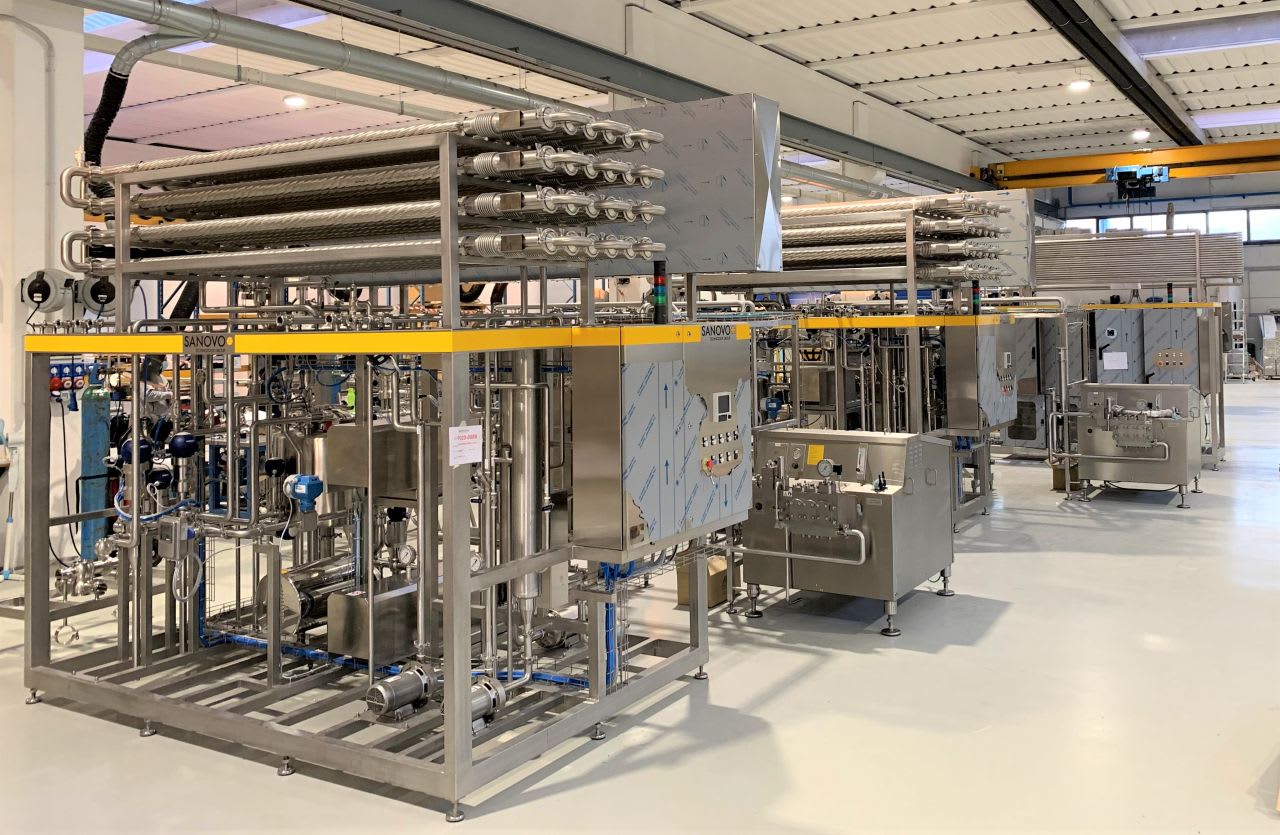Background
In the early 2000s, we started researching better ways of increasing the shelf life of pasteurized, liquid egg products, while maintaining the functional properties of the egg.
Together with food research centers and universities we evaluated various technologies within food handling and found a promising technology that exposed the liquid product to radiofrequency.
Hundreds of tests were performed on using radiofrequency on the liquid egg, with variations in temperature and holding time, but also investigating the effects of radiofrequency itself on the egg product.
To our surprise, exposing radio frequency to liquid egg had no relevant impact on bacterial inactivation. Instead, the right mix combination of temperature and holding time was decisive for achieving the best egg pasteurization results.
However, we still faced problems in the functionality, performance, and energy efficiency of the technology. That is why we continued our research and developed a pasteurization technology that utilizes ohmic heating.

Based on our research, here are three reasons why ohmic heating is more efficient than radiofrequency:
Reason #1: Energy Consumption
Considering dissipation, radiofrequency yields around 65% and requires 50% more power than ohmic heating. With ohmic heating, producers achieve energy efficiency of 95%, meaning 50% lower energy consumption, resulting in less overall production costs.
Reason #2: Precision, Stability, Safety
The high current and voltage involved and heating by the dissipation of electromagnetic field could lead to electrical shock problems in the product and sometimes also externally on the pipes. Especially, when the liquid egg product shows irregularities (like air bubbles). This is quite common, liquid egg is not always uniform.
Ohmic heating works at a way lower current and voltage and the electric field is not generated by dissipation but by contact, which ensures stability, even if the liquid is not uniform. This avoids the risk of electrical discharges and increases production safety.
Reason #3: Cost and Maintenance
Technologies based on high frequencies use delicate, expensive, and often inefficient, and short lifetime components that are very expensive and difficult to source and purchase, especially in regard to the thermionic valve, which is the core of the unit.
The ohmic heating system is composed of simple and reliable electronic components normally used in any motor driver. The thermionic valve requires much higher energy for cooling compared to any modern electronic component. Overall, with ohmic heating liquid egg producers heavily reduce their CapEx and OpEx.
What about quality control?
Apart from the efficiency benefits, relying on low temperatures and radiofrequency may cause quality control problems. Temperature and holding time are the only accepted and provable parameters showing the impact on bacteria inactivation in pasteurization by control authorities. In fact, the killing rate for bacteria is worldwide recognized with D-value and Z-value that, coincidentally, are linked only to time and temperature.
SANOVOs WAVE technology is based on ohmic heating promises extended product shelf life >90 days, a 10x times higher bacteria killing rate, no protein denaturation, and high energy efficiency. Here the newest whitepaper about the WAVE technology.
If you would like to know more about the differences between radiofrequency and ohmic heating or WAVE technology, feel free to reach out to our team of specialists.


Mauro Balasso
Vice President / Product & Business Management Egg Processing
SANOVO TECHNOLOGY ITALY
17-06-2024
Reliable, consistent pack labeling22-03-2024
Want to get started with Powder Processing?